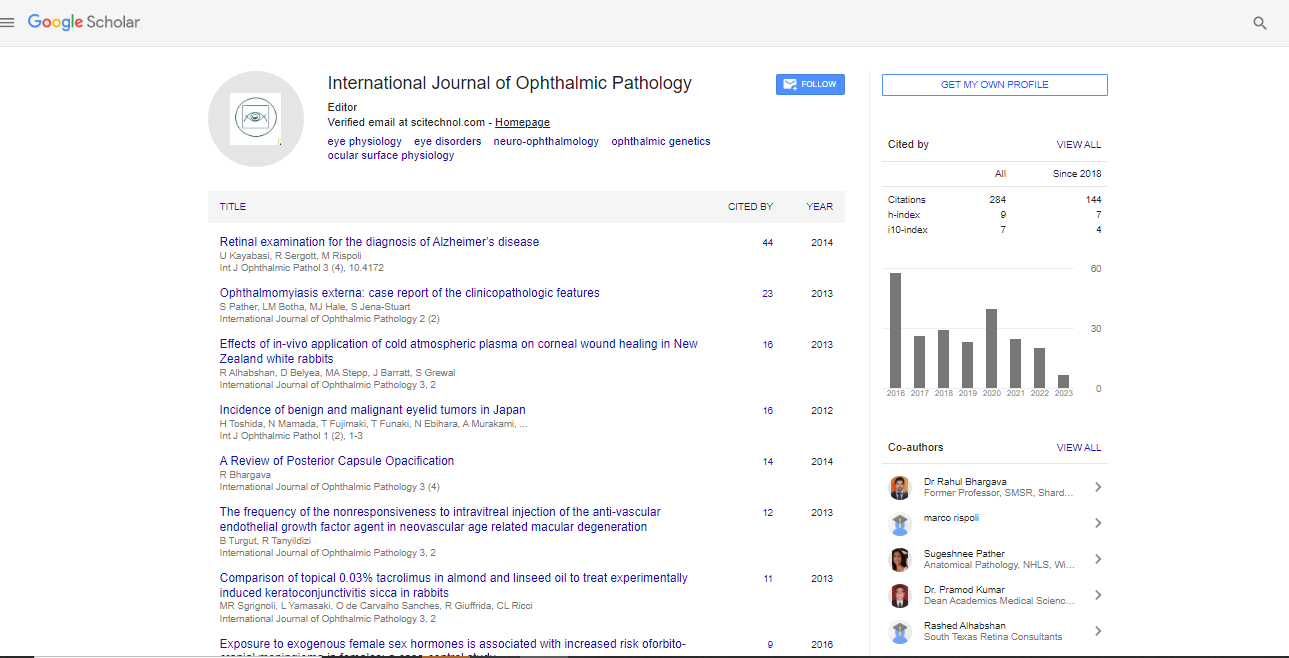27-gauge needle-assisted externalization and haptic securing technique for sutureless scleral fxation of the intraocular lens: Moving toward simplicity
Anadi Khatri
Birat Eye Hospital, Nepal
: Int J Ophthalmic Pathol
Abstract
Purpose: To report a modifed technique of sutureless intrascleral fxation of a posterior chamber intraocular lens with use of instruments of anterior segment surgery and its outcomes.
Design: Prospective, noncomparative, interventional case series.
Participants: Ninety-two eyes of 92 patients with aphakia and subluxated lens who underwent surgery were evaluated.
Materials and methods: 27-gauge needles were introduced transclerally and guided by the viscocanula to externalize via the main wound. The haptics were loaded into the lumen and externalized from entry points. The haptics were then fxed in a scleral tunnel made by a 27-gauge needle. The best-corrected visual acuity (BCVA) and complications were determined.
Results: Ninety two eyes which were operated and completed follow-up of 6 weeks were included in the study. The most common indications for scleralfxated intraocular lens (SFIOL) were subluxated lens – 55 eyes (59%), and surgical aphakia – 31 eyes (34%). Sixty-nine eyes (75.7%) had a postoperative vision of uncorrected visual acuity of 6/18 on day 1. There was an improvement in mean log MAR BCVA (0.086±0.18) at 6 weeks as compared to preoperative visual acuity (p0.05). BCVA of 6/12 or better was attained in 94% of the cases at 6 weeks. Special mentions need to be made for 6 (7%) of our cases. Three of the patients were cases of fully treated postoperative endophthalmitis who lacked capsular support. Two of the other cases had undergone pars plana vitrectomy for retinal detachment. Both had silicon oil removal done 1 month before the SFIOL procedure. One of the patients had Marfan’s syndrome.
Conclusion: Our procedure is safe, easy, less traumatic, and less resource-demanding with good visual outcomes and can be performed even in lowresource settings of developing countries. It may also be considered in patients who have had posterior segment surgeries previously.
Biography
E-mail: anadikc@gmail.com
 Spanish
Spanish  Chinese
Chinese  Russian
Russian  German
German  French
French  Japanese
Japanese  Portuguese
Portuguese  Hindi
Hindi 